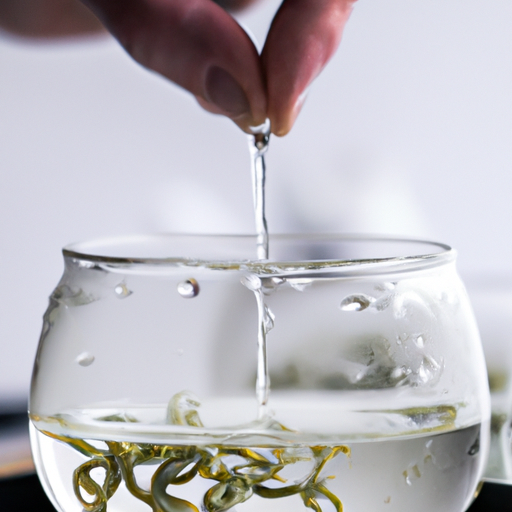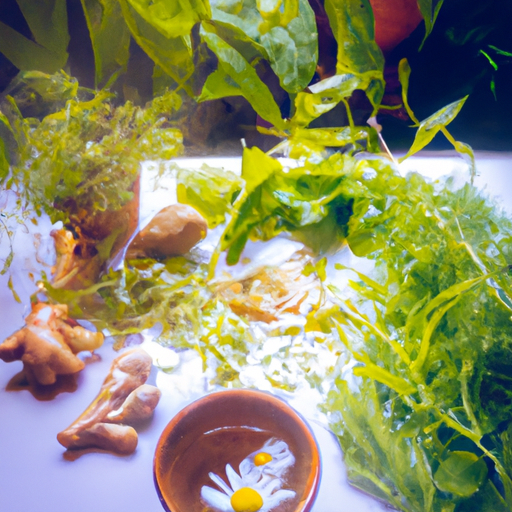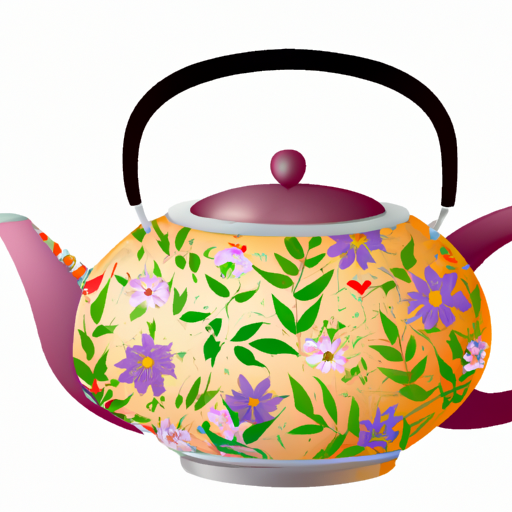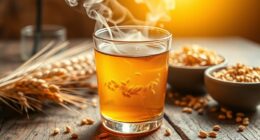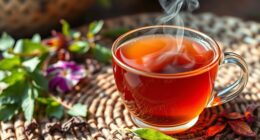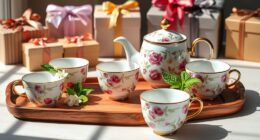As the ancient Chinese adage goes, ‘A good cup of tea is like a warm hug for the soul.’ And when it comes to oolong tea, the art of brewing takes center stage. With its delicate flavors and rich aromas, oolong tea is a true testament to the mastery of the tea brewing process.
Through the careful selection of teaware, precise steeping times, and a deep understanding of water temperatures, one can unlock the full potential of this extraordinary beverage.
In this article, I will guide you through the intricate world of oolong tea brewing, sharing the techniques and secrets that will elevate your tea experience to new heights. Whether you choose the Western-style mug brewing or the traditional Eastern method with smaller teapots, the key lies in the right combination of teaware and equipment.
Gong fu tea sets, gaiwan cups, Chinese zisha teapots, or glass teapots – each option brings out unique nuances in the flavor profile of different oolong teas.
But teaware is just the beginning. Steeping guidelines are equally crucial in achieving the perfect brew. Wu Yi oolong tea requires a minute of steeping time, while High Mountain tea demands a bit more patience at 1-2 minutes. And let’s not forget about the water-to-leaf ratio – 3-5 grams of leaves per cup for Wu Yi, and 4-5 grams for High Mountain.
For those who prefer a refreshing twist, cold brewing is also an option. All it takes is a big glass teapot or pitcher, tea leaves, and a minimum of 6 hours in the refrigerator. The result is a chilled oolong tea that is both invigorating and satisfying.
So, join me on this journey of mastering the art of brewing oolong tea. Together, we will unlock the hidden depths of flavor and create a tea experience that is truly extraordinary.
Key Takeaways
- Oolong teas can be brewed using various steeping times and water temperatures
- The best teaware for brewing oolong tea is a gong fu tea set or smaller teapots
- Different types of oolong teas require different brewing times and water/leaf ratios
- Oolong tea can also be cold brewed for a unique and refreshing flavor experience
Brewing Techniques
I can improve my brewing techniques by following the recommended steeping times and water/leaf ratios for different types of oolong teas. When it comes to oolong tea, there are two main brewing techniques: Eastern and Western brewing.
Eastern brewing, using smaller teapots like gong fu tea sets, is known for bringing out the best flavor in oolong teas. On the other hand, Western brewing, using regular mugs or infuser cups, is more convenient for brewing oolong tea in the office.
It is important to note that the steeping times and water/leaf ratios vary for different types of oolong teas. For example, Wu Yi oolong tea should be steeped for 1 minute with 3-5 grams of leaves per cup of water, while High Mountain tea should be steeped for 1-2 minutes with 4-5 grams of leaves per cup of water.
Additionally, oolong tea can also be cold brewed for at least 6 hours or overnight. To cold brew, simply add 2 spoons of tea leaves and lukewarm or cold water, cover with a lid, and refrigerate for at least 6 hours. Remember to use within 24 hours to enjoy the best flavor.
Teaware and Equipment
Teaware and equipment play a crucial role in enhancing the flavor of different types of oolong teas. One popular choice is using a gong fu tea set, which allows you to appreciate the nuances of the tea leaves. This traditional Chinese teaware consists of a small teapot, tea cups, and a tea tray.
The gong fu brewing method involves multiple short infusions, allowing the tea to fully unfurl and release its flavors. Another option is using Chinese teapots, such as the zisha teapots, which are ideal for Chinese oolong teas like Wu Yi or Dan Cong. These teapots are made from unique clay that can enhance the taste of the tea.
Whether you choose a gong fu tea set or a Chinese teapot, investing in the right teaware can greatly enhance your oolong tea brewing experience.
Steeping Guidelines
To achieve the perfect flavor, it’s important to follow the recommended steeping guidelines for different types of oolong teas. The water temperature and steeping times play a crucial role in extracting the optimal taste from the leaves.
For Wu Yi oolong teas like Red Robe and Qi Lan, steeping for 1 minute with 3-5 grams of leaves per cup of water is ideal.
Anxi oolong teas such as Ti Kwan Yin should be steeped for 1 minute with 4-5 grams of leaves per cup of water.
High Mountain teas require a slightly longer steeping time of 1-2 minutes with 4-5 grams of leaves per cup of water.
White Tipped oolong and bug-bitten oolongs should be steeped for 2-3 minutes with 150-200 ml of water for 3 grams of leaves.
Flavored oolongs, on the other hand, should be steeped for 2-3 minutes with 2-3 grams of leaves per cup of water.
By following these guidelines, you can ensure that your oolong tea is brewed to perfection, resulting in a delightful and satisfying tea experience.
Frequently Asked Questions
What are the health benefits of drinking oolong tea?
Drinking oolong tea is like sipping on a gentle breeze. It aids in weight loss and offers numerous health benefits. Compared to green tea, oolong tea has a unique flavor and contains polyphenols that promote overall well-being.
Can I reuse oolong tea leaves for multiple infusions?
Yes, you can reuse oolong tea leaves for multiple infusions. It’s a common practice in tea brewing. By adjusting steeping techniques and brewing tips, you can enjoy several flavorful cups from the same leaves.
Are there any specific food pairings that go well with oolong tea?
Food pairings with oolong tea are a delightful journey for the taste buds. The bold flavors of roasted oolong complement rich desserts like chocolate cake, while floral oolongs dance harmoniously with light pastries and fresh fruits. The possibilities are endless!
How should I store oolong tea to maintain its freshness?
To maintain the freshness of oolong tea, store it in an airtight container away from light, heat, and moisture. Avoid storing it near strong odors. Use within 6-12 months for optimal flavor.
Is it possible to blend different types of oolong teas together for a unique flavor profile?
Yes, it is possible to blend different types of oolong teas together to create a unique flavor profile. By experimenting with different blending techniques, you can explore a wide range of flavor combinations and create your own signature oolong tea blend.
Conclusion
In conclusion, mastering the art of brewing oolong tea is a journey that requires patience, precision, and a deep understanding of the steeping techniques and teaware options available.
By following the recommended steeping times, water temperatures, and water-to-leaf ratios, one can unlock the rich flavors and subtle nuances of different types of oolong teas.
Remember, as the ancient adage goes, "A tea master’s skill lies in the details." So pay attention to every aspect of the brewing process, from the choice of teapot to the gentle pouring technique.
With practice and dedication, you’ll be able to create the perfect cup of oolong tea every time.

